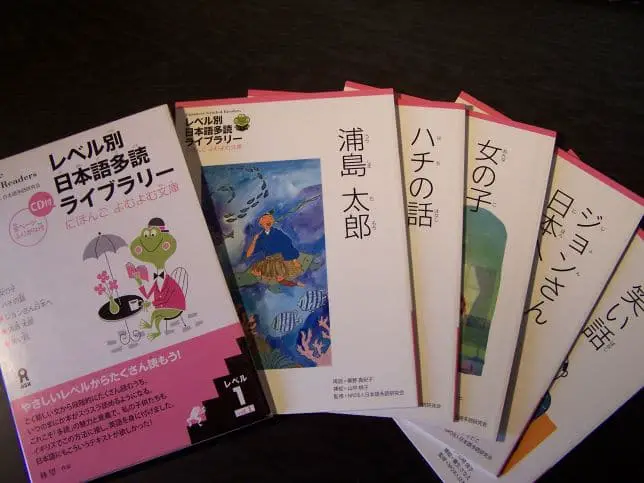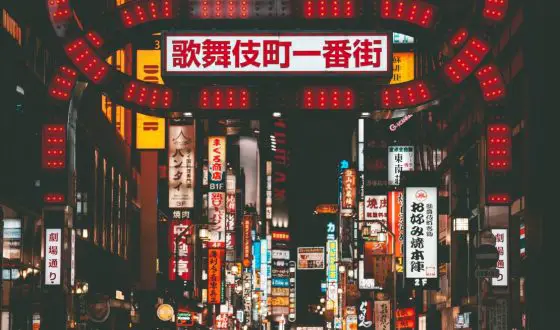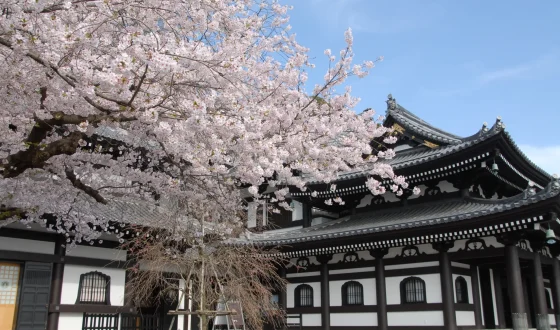Hiragana vs Katakana – What Is The Difference?
Japanese is considered one of the most difficult languages to learn. The writing system alone can easily make any linguist back out. Japanese people use not only one but three alphabets – Hiragana, Katakana and Kanji. While Kanji is adopted from China, Hiragana and Katakana are two primary Japanese alphabets. In today’s blog, we are going to discover about Japanese writing system and Hiragana vs Katakana – mainly the differences between these two. If you are interested in learning Japanese, reading this blog may be a great start for you.
Hiragana Vs Katakana – What Is The Difference?
1. Basic Introduction On Japanese Writing System
There are 3 sets of Japanese letters which are Hiragana, Katakana and Kanji. Below is an example of how Japanese people can use all three kinds of the alphabet in 1 sentence.
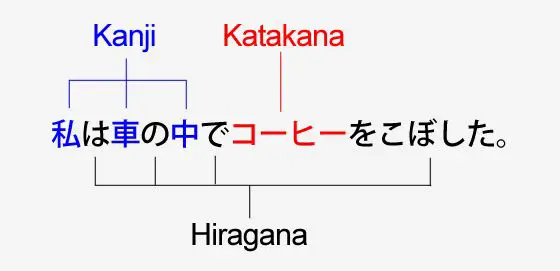
A sentence can be written in three kinds of alphabet
Though 50 – 70% of Japanese writing uses Kanji, Hiragana and Katakana are the most standard forms of Japanese writing. Unlike Kanji, the characters of Katakana and Hiragana normally do not represent unique meanings when they stand alone. You must combine two or many characters to form words. These words then can be rewritten again in the form of Kanji.
For example: か (Ka), ざ (Za) and ん (n)” are three characters of Hiragana. These syllables alone may not make any sense but together they form the word かざん – which means Volcano. It can also be represented in Kanji form as 火山
There is another reason why Hiragana and Katakana are both key alphabets that every Japanese learner must master first before moving onto Kanji. Once you understand their rules of pronunciation, you can easily speak any Japanese words out loud. This is very different from English as you can hardly speak an English word correctly without knowing its pronunciation. Let’s take a look at the above example. If you do not know the word “Volcano”, you will probably not know how to speak it out loud. You may say /vokano/ instead of /vɒlˈkeɪnəʊ/. But for Japanese, once you know the rule you can interpret かざん into “Kazan” perfectly.
2. What is the difference between Hiragana and Katakana?
2.1. History
Before ancient Chinese was introduced to Japan around the first or 2nd century AD, Japan did not have the writing system as it has now. Hiragana and Katakana only appeared when Japanese people tried to create their own writing system in the 9th century, during the Heian period. Both of them are simple forms of Chinese characters but represent the sound of the Japanese. Some studies show that at the beginning, Hiragana was mainly used by women while Katakana was used by Buddhist monks, and later on by men. However, this hypothesis is still under question.
As time passed by, Japanese people have continuously developed and improve their writing system. It is no secret that the Japanese now is one of the most complicated languages in the world. Even Japanese people can struggle to read a Japanese word. So it is not necessary to worry too much when you’ve just started taking a Japanese lesson.
2.2. Hiragana vs Katakana chart
Hiragana and Katakana both consist of 46 basic letters, including 5 main vowels. In fact, Katakana and Hiragana charts are correspondents to each other.
Take “Volcano” as an example. In hiragana, it is “かざん” while in Katana it is “カザン“. They look different but have the same pronunciation which is Kazan.
Of course, you may wonder “What is the purpose of creating two alphabets when their sounds are exactly the same? What is the difference between hiragana and katakana besides their appearance and history?” Well, let’s take it easy! You will have your answer but before that, let’s take a closer look at Hiragana and Katakana chart below:

Hiragana and Katakana both consist of 46 basic letters
Besides these 46 characters, there are some additional sounds that are represented by diacritics and combinations of symbols.
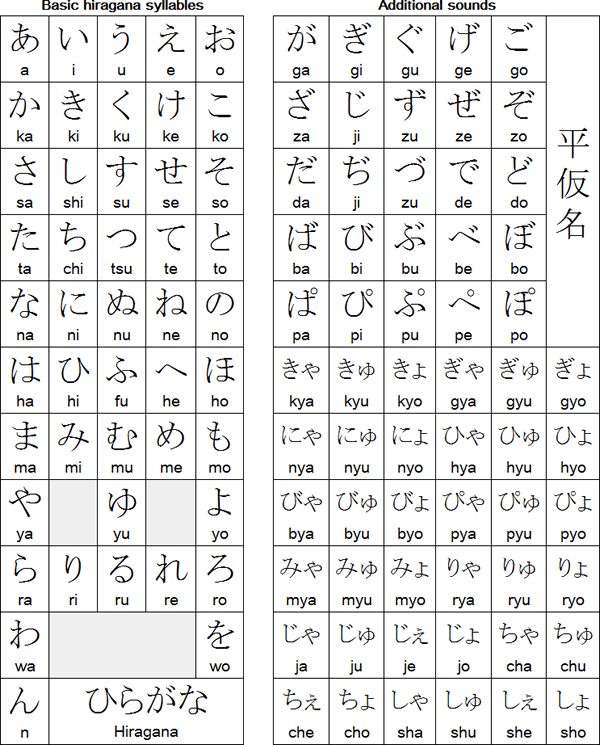
Hiragana chart
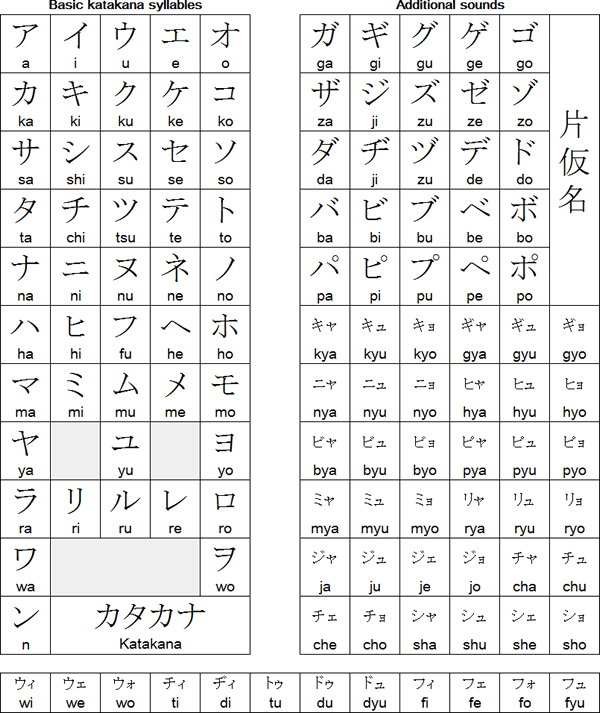
Katakana chart
Read more:
- What To Wear In Japan In Summer – The Ultimate Check List
- Among The Most Popular Sushi Rolls, Best Taste Goes To …
2.3. The shape
Japanese people created Hiragana based on Chinese calligraphy-style characters called Sōsho (草書). It is curly with several successive brush strokes.
On the other hand, Katakana is more like a print in its appearance. The characters are more angular and sharper.
To make it more clear, you can think that Hiragana has a soft, gentle feature of a woman while Katakana is bolder and more angular like a man.
2.4. When do we use Hiragana and Katakana?
Japanese people use Katakana to present borrowed words which Kanji is not applicable. These words mainly come from Europe and America. For example: Coffee (コーヒー), America (アメリカ), Camera (カメラ),…
In addition, it is also used to add emphasis to informal text. Sometimes, people will change words that normally are written in hiragana into katakana to convey sound effects such as the loudness or roughness in the speaker’s voice. You may also see some brands write their names in Katakana to stand out. It is quite similar to writing English in caps or italics.
Meanwhile, Kanji is considered to convey an educated tone and Hiragana is a standard voice.
2.5. Hiragana vs Katakana vs Kanji
Now, let’s take a quick glance at Kanji – the most complicated component of the Japanese writing system. Kanji is originated from China. It appeared in Japan a few centuries before Hiragana and Katakana. More than 50,000 Kanji exist but only 2136 Kanji are for official use in the publishing industry, and 1945 Kanji that the Japanese Ministry of Education requests to teach in schools.
Japanese people usually use Kanji to write names of people and places. Normally, 50 – 70% of the paragraphs in newspapers and books are Kanji. That’s why Kanji seems to have an upper-class tone.
In comparison with Hiragana and Katakana, Kanji is much more difficult to learn. However, even some Japanese people are struggling to read books without the help of Japanese dictionary. So do not worry too much!
>> Want to read more, check the category Things to do to learn more about Japan <<
Conclusion
Hopefully, we have provided you enough information on the differences between hiragana and katakana. Yes, Japanese can easily spin your head with a complex writing system and enormous vocabulary. But if you have strong love for this language, do not let those things stop you. Now, let’s take the first step. Sit down and learn to master Hiragana and Katakana in 1 week. Do you accept this challenge?
If you have any questions and concern, please feel free to share under the comment section below.

